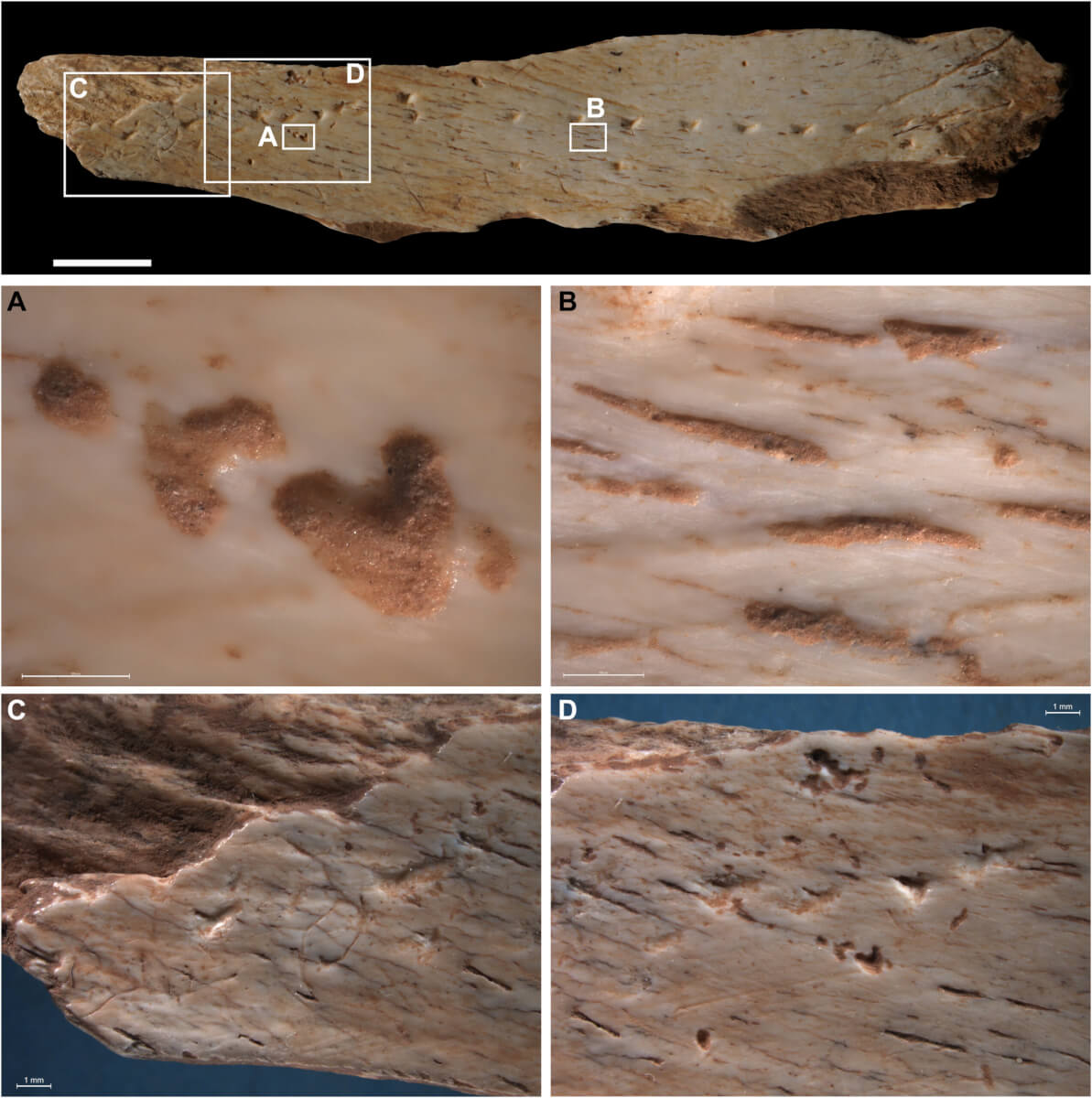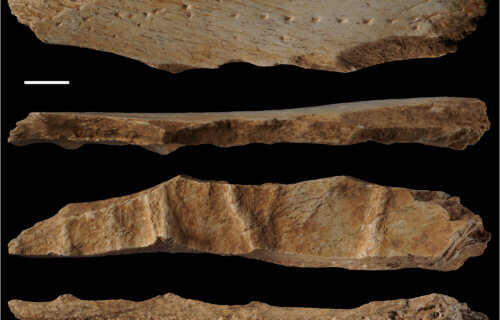NOUVELLE AQUITAINE, France — Humans may have started wearing leather nearly 40,000 years ago, during the last Ice Age, a recent discovery reveals. Scientists have uncovered a 39,600-year-old bone with unique indentations, suggesting that early humans used it to punch holes in durable animal skins.
The hip bone, believed to be from a bison, was discovered at a site named Terrasses de la Riera dels Canyars near Barcelona, Spain. The bone’s flat surface exhibits 28 puncture marks, including a series of 10 holes, each about five millimeters apart. The remaining marks are scattered more randomly.
This pattern, described as “intriguing,” does not appear to be decorative or a tally, which are the typical interpretations for such ancient artifacts. Microscopic examination reveals that the primary line of holes was made by the same tool, while the other indents were created at different times using distinct tools.
“We don’t have extensive information about clothing because they are perishable. It’s an early technology that remains largely unknown to us,” says lead author Dr. Luc Doyon from the University of Bordeaux in France, according to a statement by SWNS.

The international research team employed experimental archaeology, a technique in which ancient tools are replicated and used to determine how the original marks were made.
“We’re attempting to replicate the gestures utilized by prehistoric people to produce specific modifications on the bone,” explains Dr. Doyon.
The only successful method they found to recreate the type of indents on the bone involved using a burin, a chisel-like stone tool, to pierce through a thick hide using a technique known as indirect percussion. The researchers believe that these holes were created during the process of making or repairing leather goods.
After punching a hole in the animal hide, a thread could be inserted through the material using a pointed tool, creating a secure seam. This would have been a critical cultural adaptation that enabled early humans to expand into new territories.
The oldest surviving cloth fragments in the world date back to approximately 10,000 years ago. This discovery sheds light on when humans began crafting fitted clothing. Homo sapiens arrived in Europe about 42,000 years ago, but eyed needles, which aren’t sturdy enough to puncture leather repeatedly, weren’t found in this region until roughly 26,000 years ago.
The study is published in the journal Science Advances.
South West News Service writer Mark Waghorn contributed to this report.
